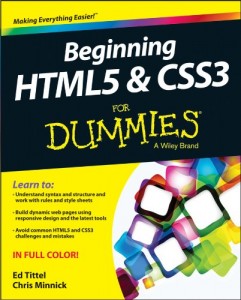When the renowned computer scientist Jim Gray went missing at sea last week, the internet community rose up to help in the search in any way that they could. One of the more ingenious, although unfortunately not successful, methods employed was to upload thousands of satellite photos of the area where he disappeared to the Web and ask volunteers to examine them for objects that might be his sail boat.
This massive online manhunt was enabled by Amazon.com’s Mechanical Turk service.
Mechanical Turk, named after the chess-playing mannequin illusion of the 18th century, is a web application that enables “artificial artificial intellgence” by dividing up large jobs such as photographic analysis or data entry into chunks that can be performed by people over the Internet. The basic idea is that certain types of jobs, such as jobs involving pattern recognition or identification of objects in photographs, are more easily and accurately performed by humans than computers. If these types of jobs also involve working with large amounts of data, splitting the work up among large numbers of humans can be a more efficient (read: cheaper) method of doing the work than writing or utilizing specialized artificial intelligence software.
Services such as Mechanical Turk are being touted by some as an important development in harnessing the “collective intelligence.” Some have gone so far as to suggest that such human-powered Web applications represent a new paradigm and possibly a new version number of the Web and a new way of doing business on the Web. Frankly, I love the idea of being able to employ volunteers to search photographs for a missing person, but I’m disturbed by the idea of using random Web surfers to boost your corporate profits.
Mechanical Turk allows anyone to create a job that they’d like other people to complete on the Web. The creator of the job can specify the amount they’ll pay for each HIT (Human Intelligence Task). Typical tasks involve looking at photos and identifying certain objects in them, or transcribing podcasts. Typical payments range from 1 cent to $1 per HIT. You don’t get paid for your work unless it’s accepted by the creator of the task.
At first glance, these rates and types of tasks looked to me like the digital equivalent of sweatshop labor. Companies are farming out jobs that are too boring, or that would be too costly to have someone on payroll do, to be done by the ‘collective intelligence’ for very low wages. I decided to try out a few tasks in order to try to get a better feeling for whether it was possible to actually make a living off of this type of work, or if it is really just exploitation and the first step towards “The Matrix.”
At 10:00 AM, I sat down with my laptop and a cup of coffee and started in on my first workday at Mechanical Turk.
I began by going to the list of available HITs and sorting them highest paying first. I’m not cheap. The first HIT said it paid 96 cents, with a bonus of up to twice that for accuracy, and there was a qualification test. The ‘test’ turned out to be just clicking a checkbox and hitting a submit button. So far so good.
The task was to transcribe a 9 minute podcast. I’m a fairly fast typer, but I guessed that transcribing a podcast would take at least 3 times as long as the length of the podcast, and there was a style guide to follow too. In theory, if I were to complete the task perfectly, I could earn $2.88 [I actually ended up making $1.92].
In the interest of making the best possible use of my time, I started listening to the podcast – something about making money on eBay – while looking over the style guide.
At 10:15, I started my work.
At 11:20, after typing 1570 words, I finished my first job. I had grossly underestimated the amount of work it would take to transcribe 9 minutes of audio. So far, the best case scenario was that I was making slightly under $3/hour. I decided to move on to my next HIT.
The next task I found was a simple Google bombing job. I was to search for a certain phrase on Google and then click on a certain company’s link. The idea (not spoken in the HIT description, of course) is that the cumulative effect of hundreds of people doing this same search will improve that company’s rank in Google. I refused this one on ethical grounds.
Several other jobs involved registering on different sites, various search engine scams, Google Adword fraud, and a lot of people looking for creative people to give them ideas or write content for their sites for 25 cents. At 11:30, I became so repulsed by the nature of the majority of the jobs, and by the piddly amounts people were willing to pay for my writing talents that I decided to quit my job as a human CPU.
Yelling “Take this job and shove it!” to my laptop wasn’t very satisfying, but it was actually the first time I had ever spoken those words when quitting a job, so that was one positive aspect of the experience.
Jim Gray is known for his work with databases, and several very large databases in particular, including, ironically, Microsoft’s database of satellite images, Teraserver. He also was the recipient of a Turing Award, which is named after Alan Turing, who famously created the Turing Test of artificial intelligence.
I never met him, but I suspect that Dr. Gray would agree with me that the future of the Internet should not be one in which human intelligence is devalued simply because we now have the technology to give 10 cents to anyone who’s willing to do our most menial tasks for that amount.
Tragically, as of this writing, it seems very unlikely that Jim Gray will return. The amazing volunteer effort to find him, however, stands as a testament to the power of the Internet community and of the Web to bring people together. My experience today with the for-profit uses of the same technology, however, reminds me that the collective intelligence aspect of Web 2.0 also enables less noble endeavors.
My latest book, which I co-authored with Ed Tittel, is out now and available everywhere computer books are sold! If you have no previous experience with web development and you’re interested in learning to create websites, or if you’re already a web developer and want to brush up on the latest HTML and CSS technologies, this is the book for you!




